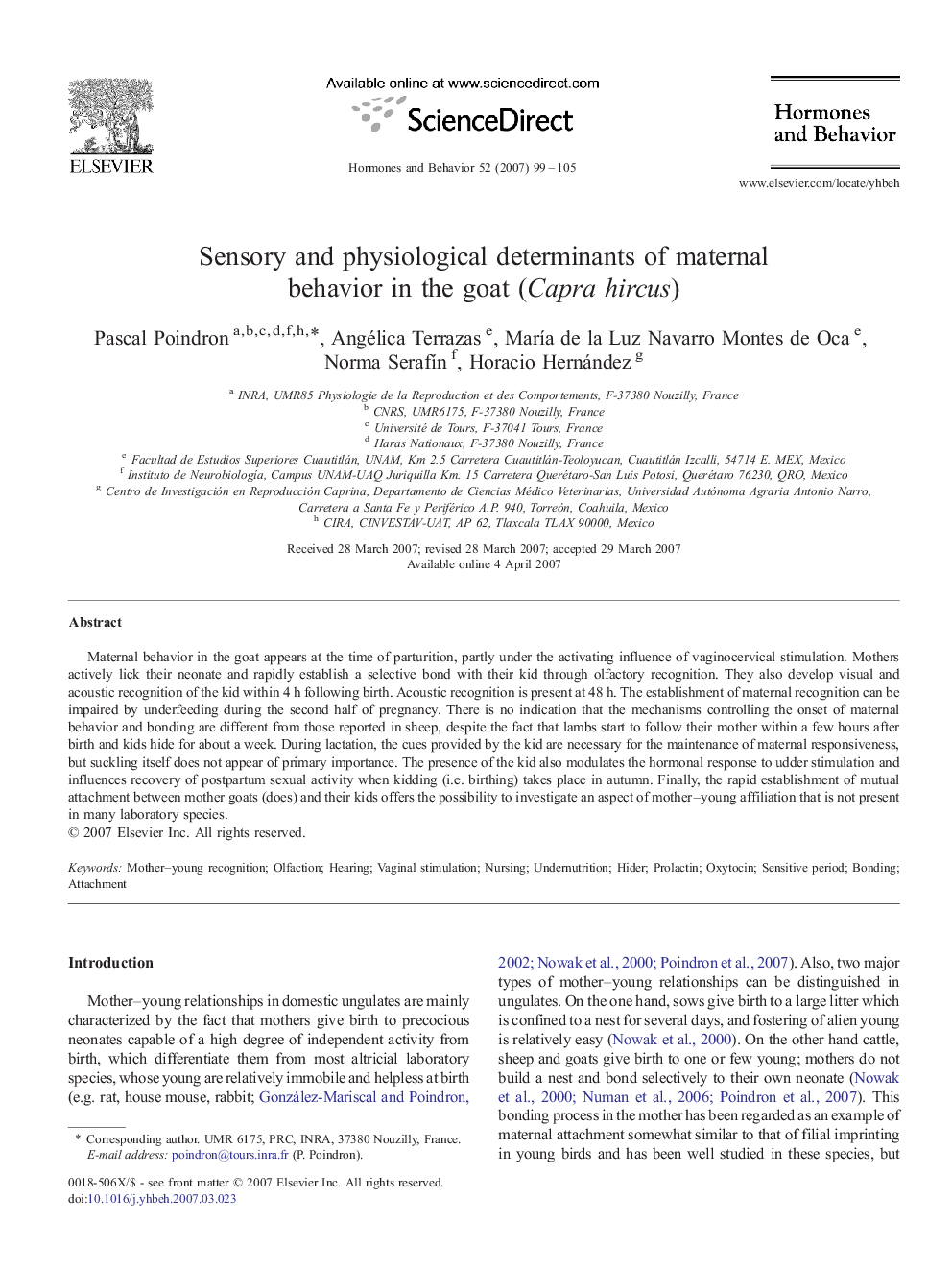| Article ID | Journal | Published Year | Pages | File Type |
|---|---|---|---|---|
| 322975 | Hormones and Behavior | 2007 | 7 Pages |
Maternal behavior in the goat appears at the time of parturition, partly under the activating influence of vaginocervical stimulation. Mothers actively lick their neonate and rapidly establish a selective bond with their kid through olfactory recognition. They also develop visual and acoustic recognition of the kid within 4 h following birth. Acoustic recognition is present at 48 h. The establishment of maternal recognition can be impaired by underfeeding during the second half of pregnancy. There is no indication that the mechanisms controlling the onset of maternal behavior and bonding are different from those reported in sheep, despite the fact that lambs start to follow their mother within a few hours after birth and kids hide for about a week. During lactation, the cues provided by the kid are necessary for the maintenance of maternal responsiveness, but suckling itself does not appear of primary importance. The presence of the kid also modulates the hormonal response to udder stimulation and influences recovery of postpartum sexual activity when kidding (i.e. birthing) takes place in autumn. Finally, the rapid establishment of mutual attachment between mother goats (does) and their kids offers the possibility to investigate an aspect of mother–young affiliation that is not present in many laboratory species.
